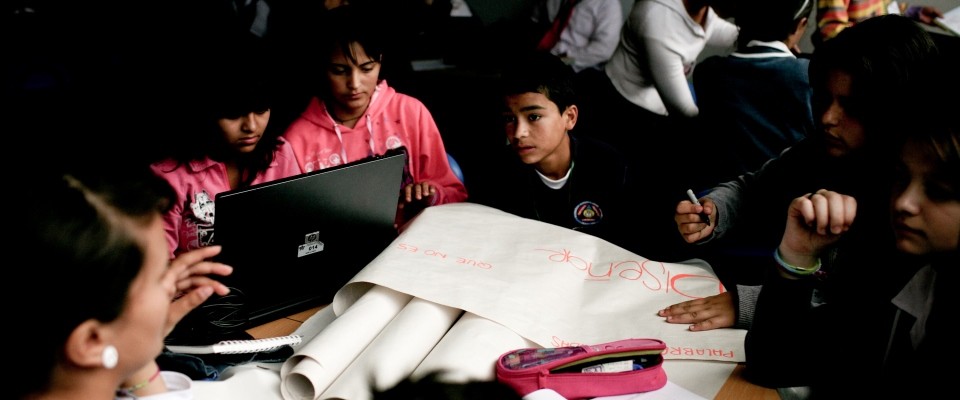- What We Do
- Agriculture and Food Security
- Democracy, Human Rights and Governance
- Economic Growth and Trade
- Education
- Ending Extreme Poverty
- Environment and Global Climate Change
- Gender Equality and Women's Empowerment
- Global Health
- Water and Sanitation
- Working in Crises and Conflict
- U.S. Global Development Lab
-
Learn More
The 2015-16 Affordability Report
-
Learn More
Market Approaches to Increasing Internet Connectivity
-
Learn More
MIT Innovations Journal on Local Content
Connecting People. Transforming Nations. ![]() (pdf - 6 MB)
(pdf - 6 MB)
The incredible proliferation of mobile phones and broadband Internet offers a profound opportunity to connect people around the world and can increase effectiveness, efficiency, and connectedness across sectors, in health, agriculture, education, and governance.
According to one estimate, the ‘digitization’ of developing economies could yield as much as $4.1 trillion in GDP among the 3.9 billion consumers at the base of the pyramid. This would create 64 million new jobs and help lift 580 million people out of poverty who currently live on less than US$4.00 per day.
Yet significant barriers still persist for people in developing countries in effectively using digital technology, particularly for women and the rural poor. These include affordability, illiteracy and a lack of locally relevant content, inadequate digital skills, and a lack of demographic usage and access data.
The Digital Inclusion team at the Lab facilitates the expansion of internet access in USAID presence countries to accelerate the Agency’s development objectives, while ensuring the most marginalized have the skills and resources to be active participants in the digital economy.
Alliance for Affordable Internet
The lightning-fast Internet access we have in the United States is not the norm in most developing countries. In fact, only one in three people in the developing world are even connected to the Internet.
In Africa, just 19% of people are online–half the penetration rate of Asia and the Pacific. Women and girls are disparately affected—25% fewer women and girls than men and boys are online, and the gap grows to over 40% in Sub-Saharan Africa. And in many countries broadband prices exceed monthly income by over 80%, meaning the biggest barrier to access for many is no longer technical, but rather, cost.
The Alliance for Affordable Internet (A4AI), USAID’s partnership with Google.org, Omidyar Network, DFID, and a broad coalition of governments, technology providers, civil society groups, and academia, is empowering policy makers with the tools and resources to facilitate more open, competitive and innovative markets. Through a combination of advocacy, research, and knowledge-sharing, A4AI aims to facilitate the achievement of the UN Broadband Commission target of entry-level broadband services priced at less than 5% of average monthly income.
In doing so, A4AI will help to connect the two-thirds of people in developing countries who cannot access the Internet.
Innovative Connectivity Solutions
In 2013, USAID and Microsoft teamed up with Mawingu Networks, a Kenyan startup, to use cutting-edge wireless connectivity technology and low-cost solar power to deliver affordable broadband access to remote communities in Kenya using television white space (TVWS).
A $169,000 grant from USAID played a seminal role in establishing the business model for Mawingu Networks, which is now rapidly expanding, providing low-cost internet connectivity across rural Kenya. Mawingu Networks has received venture capital funding from private investors, including investor Jim Forster, Paul G. Allen’s Vulcan Inc., and Microsoft Corporation. They now operate over 300 hotspots, providing connectivity to nearly 10,000 people in rural Kenya. In September 2016, OPIC announced a $4.1 million loan commitment and first disbursement to Mawingu to accelerate the rollout of its network to rural areas in Kenya.
The impact of the USAID’s partnership with Mawingu Networks extends beyond Kenya. After piloting TVWS in rural Kenya, USAID been instrumental in supporting rural deployment of this technology around the world, with projects in rural locations in five countries, including the Philippines, Indonesia, Botswana, and Jamaica.









Comment
Make a general inquiry or suggest an improvement.